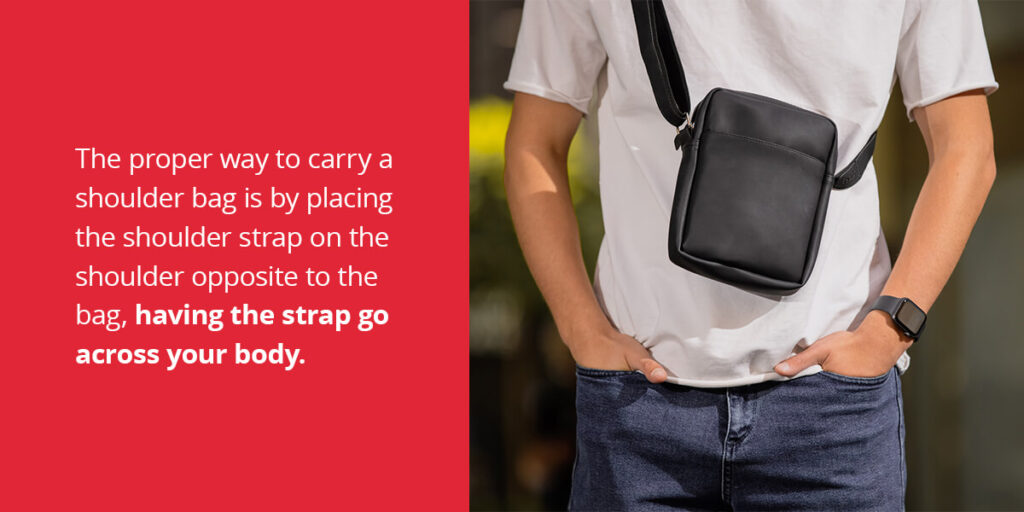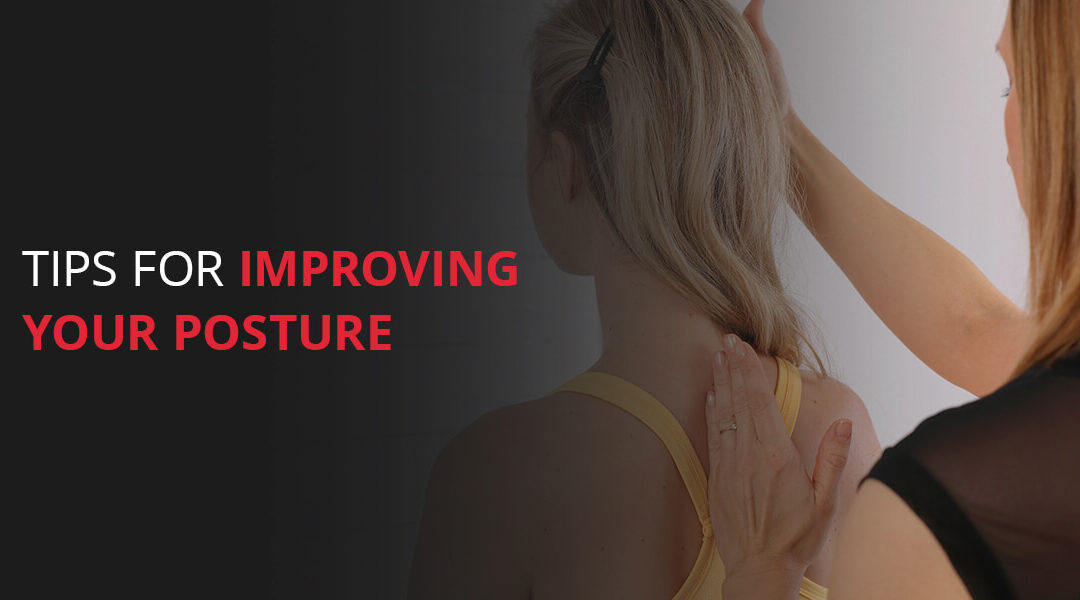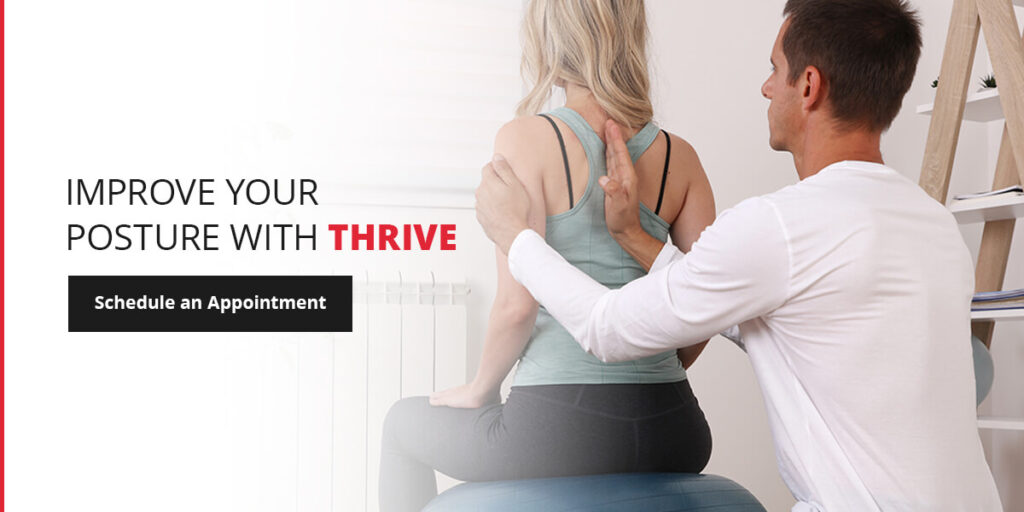Good posture keeps your bones and joints in optimal alignment. The proper alignment of your bones and joints reduces back pain by decreasing excess wear-and-tear of joint surfaces, reducing pressure on the ligaments that hold spinal joints together, and allowing muscles to function more efficiently.
If you’re looking to find out how to correct your posture, read through these good posture tips!
Good Sitting Posture
Spinal position is critical to good posture, whether sitting, standing or walking. Good sitting posture involves static posture, which is your posture when you’re not moving and hold one position for an extended period. Static posture also includes standing and sleeping posture. The considerations with static posture differ from those with dynamic posture, which is your posture while moving.
With static posture, you have decreased blood flow to your joints and muscles, contributing to muscle fatigue. When your spine or body is in unnatural positions while sitting, it increases the static load on your joints and muscles and further prevents blood flow. In this way, improper posture can lead to several musculoskeletal issues.
Your spine has three natural curves at your neck, mid-back and lower back. The key to good sitting posture is maintaining those curves in their natural positions. Here are some tips to improve your posture while sitting:
- Switch your position frequently and perform gentle stretches to relieve muscle tension.
- Set a timer reminding you to take brief walks around your home or office to keep blood flowing.
- Rest your feet flat on the floor or a footrest, and avoid crossing your legs.
- Keep your knees at or below your hips.
- Sit in a chair with a back pillow or backrest that supports your spine’s natural curve.
- Keep your head and neck balanced and in line with your torso.
- Support your hips and thighs with a well-padded seat that allows them to be parallel with the floor.
- Keep your ankles in front of your knees.
- Place your computer monitor at or slightly below eye level.
- Keep your elbows close to your body and bent at 90-120 degrees.
- Relax your shoulders without rounding or pulling them back.
- Keep your forearms parallel with the ground.
- Position desks and tables at comfortable heights when sitting at them.
Besides maintaining your spine’s natural curve, mindfulness is the other key to good posture. As tasks and responsibilities pile up throughout our day, staying focused on maintaining good posture can be challenging. Staying mindful of your body’s position helps you refrain from falling back into poor posture habits. In that light, exercises like tai chi or yoga can help with mindfulness and directly improve your posture.
Good Standing Posture
As with sitting posture, proper posture when standing also involves a combination of mindfulness and maintaining your spine’s natural curvature. Here’s how to maintain good posture when standing:
- Keep your spine straight and tall and your head level.
- Pull your abdomen in and keep your shoulders back.
- Distribute your weight to the balls of your feet.
- Stand with your feet shoulder-width apart.
- Avoid locking your knees.
- Let your arms and hands hang at your sides naturally.
- Shift your weight from your toes to heels and one foot to the other when standing in one spot for extended periods.
An additional consideration with standing posture is maintaining a healthy weight. Excess weight weakens your abdominal muscles and puts extra pressure on your joints. As a result, excess weight also complicates pelvic and spinal health and negatively impacts your posture.
One way to correct posture when standing is by performing the wall test. This test shows you the correct standing posture and how well your current posture supports your spine’s natural curvature. To perform this test:
- Stand against a wall, making contact with your head, shoulder blades and buttocks.
- Keep your heels 2-4 inches from the wall.
- Slide your hand behind the curve in your lower back and place your palm against the wall.
- If there is more than one hand’s thickness of space between your back and the wall, flex your abdominal muscles to flatten the curve in your back.
- If there is less than one hand’s thickness of space, arch your back so your hand can fit snugly between your back and the wall.
Once you’ve achieved one hand’s thickness of space between your lower back and the wall while keeping your head, shoulder blades and buttocks touching the wall, you’ve arrived at the correct standing posture.
Posture When Running Errands
When running errands, you’re likely thinking about the task at hand and not your posture. Although your posture is easy to forget about when you’re busy, your body will benefit if you stay mindful of how you’re carrying yourself. Studies show that an upright posture can positively impact your mental health and stress levels. As stress often rises on busy days, paying attention to your posture can help you maintain composure when errands and responsibilities overwhelm you.
Here are some tips for good posture when you’re out running errands.

Carrying a Bag
Whether you’re carrying a purse, messenger bag or other shoulder bag, the way you wear it affects your posture. If you carry a shoulder bag over one arm, it contracts your shoulder muscles on one side. This imbalance can cause one shoulder to slump lower than the other, or you may overcorrect and lift that shoulder higher to keep the bag secure on your shoulder.
With that in mind, the proper way to carry a shoulder bag is by placing the shoulder strap on the shoulder opposite to the bag, having the strap go across your body. Carrying a shoulder bag in this way evenly distributes the weight and keeps the bag secure on your shoulder without requiring you to contract your shoulder muscles.
On the Phone
With phones, the path of least resistance involves looking down to see who texted you, sent you an email or liked your photo. It’s easier to look down at your phone than bring it up to eye level — but harder on your neck muscles.
When you need to check your phone, it’s much better to maintain good standing or sitting posture by bringing your phone to your eyes rather than your eyes to your phone. If your job requires you to be on your phone, make sure you take moments to stretch your neck muscles.
Driving
Being a low-rider can be comfortable and look cool. However, it promotes poor sitting posture. To prioritize proper sitting posture while driving, it’s helpful to:
- Sit upright.
- Bend your knees slightly, keeping them level with your hips.
- Avoid locking your legs.
- Have a back pillow to support your spine.
While long drives can test your resolve to maintain good posture, it’s particularly important to maintain good sitting posture on them.
Improve Your Posture With Thrive
With practice, anyone can improve their posture. If you’re experiencing back pain from poor posture or seeking advice on posture, don’t hesitate to reach out to Thrive! Our chiropractors can show you how to fix your posture and relieve pain.


